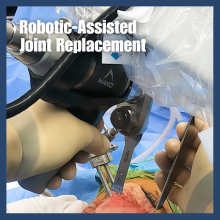Leveraging AI for High-Quality Surgical Video
Surgical videos are essential for sharing best practices, educating colleagues and students, and working to improve patient outcomes. However, capturing and producing surgical video is not always an easy task. Fortunately, AI-enabled software and tools are changing the game, making the process easier, faster, and more efficient than ever before. In this article, we will explore how AI can help you capture and produce better surgical video content and share some easy-to-use AI-based tools that can help you capture and edit higher quality surgical videos.
AI for Improving Picture/Sound Quality
One of the biggest challenges in surgical video capture is obtaining high-quality picture and sound. AI-enabled upscaling software has dramatically improved, allowing you to upscale lower quality video to 4K quality or even better without a degree in video production. AI-enabled software can also improve blurred images, eliminate picture noise, and give your video a more professional look.
In addition, AI-enabled software can help you handle post-production tasks, such as color correction and sound editing. Previously, these tasks were handled only by professional production teams, but now AI editing software can analyze your video and adjust the color and sound levels to ensure that the final product is of the highest quality.
AI Auto-Framing/Auto-Tracking Technology
Keeping the camera focused on the surgical field while avoiding distractions and unintended movements is a significant challenge in surgical video capture, especially with head-mounted or handheld camera footage. Fortunately, AI-enabled software is already helping to solve this problem with auto-framing or auto-tracking technology. This technology can make video footage more fluid and accurately capture the surgical field, making it easier for surgeons to capture high-quality surgical videos.
Easy-to-Use AI-Based Tools for Better Video
Both Adobe Premiere Pro and RunwayML offer powerful AI-enabled features that can significantly improve the quality of surgical video. These features include upscaling, color correction, sound editing, auto tracking, object detection, segmentation, and real-time processing. By leveraging these tools, surgeons can produce higher-quality surgical videos that are more accurate, detailed, and professional-appearing.
>READ MORE: Top 7 AI-Enabled Tools to Improve Surgical Video
Adobe Premiere Pro
- AI-enabled upscaling software for improving video picture and sound quality
- AI-enabled color correction and sound editing for post-production tasks
- Auto tracking technology for keeping the camera focused on the surgical field
- Can improve surgical videos or images that have been captured using older or lower quality equipment, or under noisy or poorly lighted conditions
RunwayML
- AI-enabled tools for object detection, segmentation, and tracking
- Can be used to remove objects or distractions from video footage
- Can enhance and stylize video footage with AI-powered filters and effects
- Offers real-time processing and interaction with the video in the editing process
RELATED CONTENT:
- Mastering DIY Surgical Video: Best Practices
- Creating Immersive 3D/VR Surgical Video
- 4 Steps to Shooting Pro-Quality Smartphone Video
- GoPro for High-Quality Surgical Video




.jpg)



